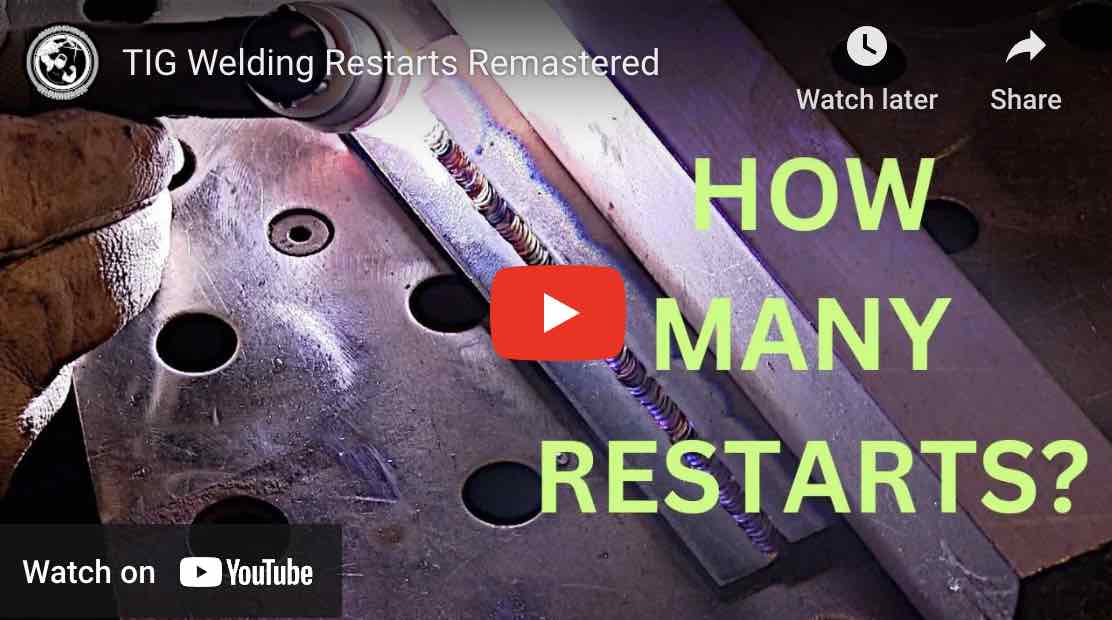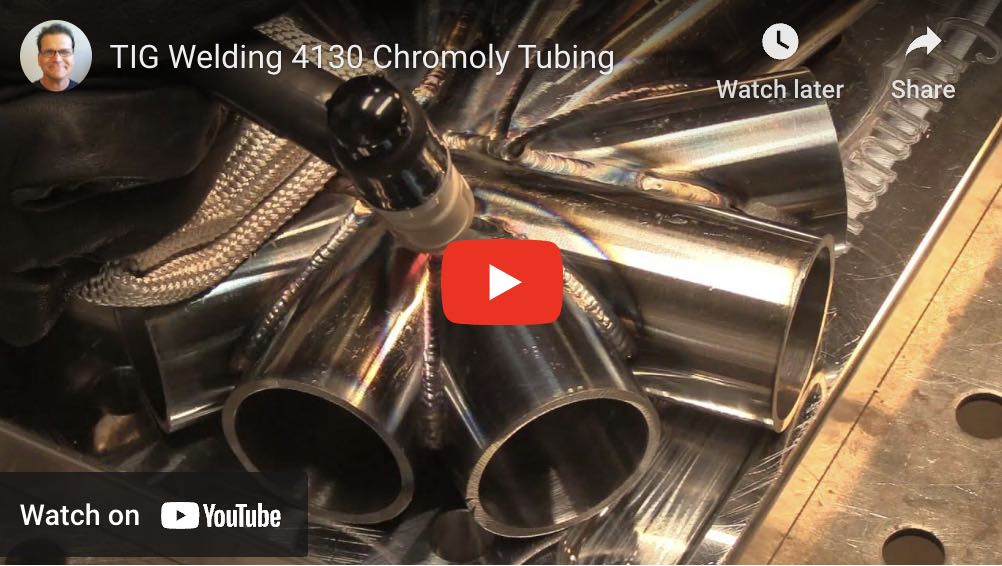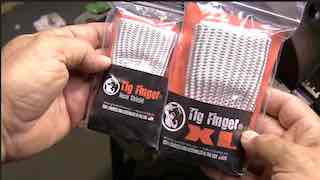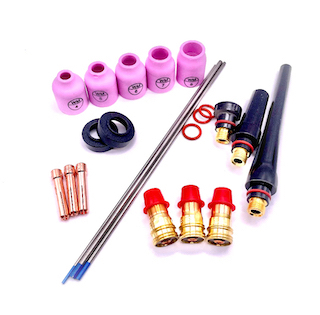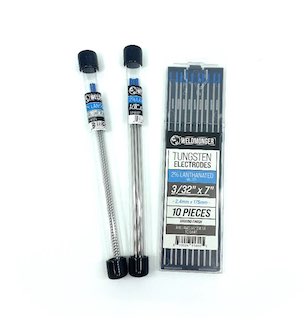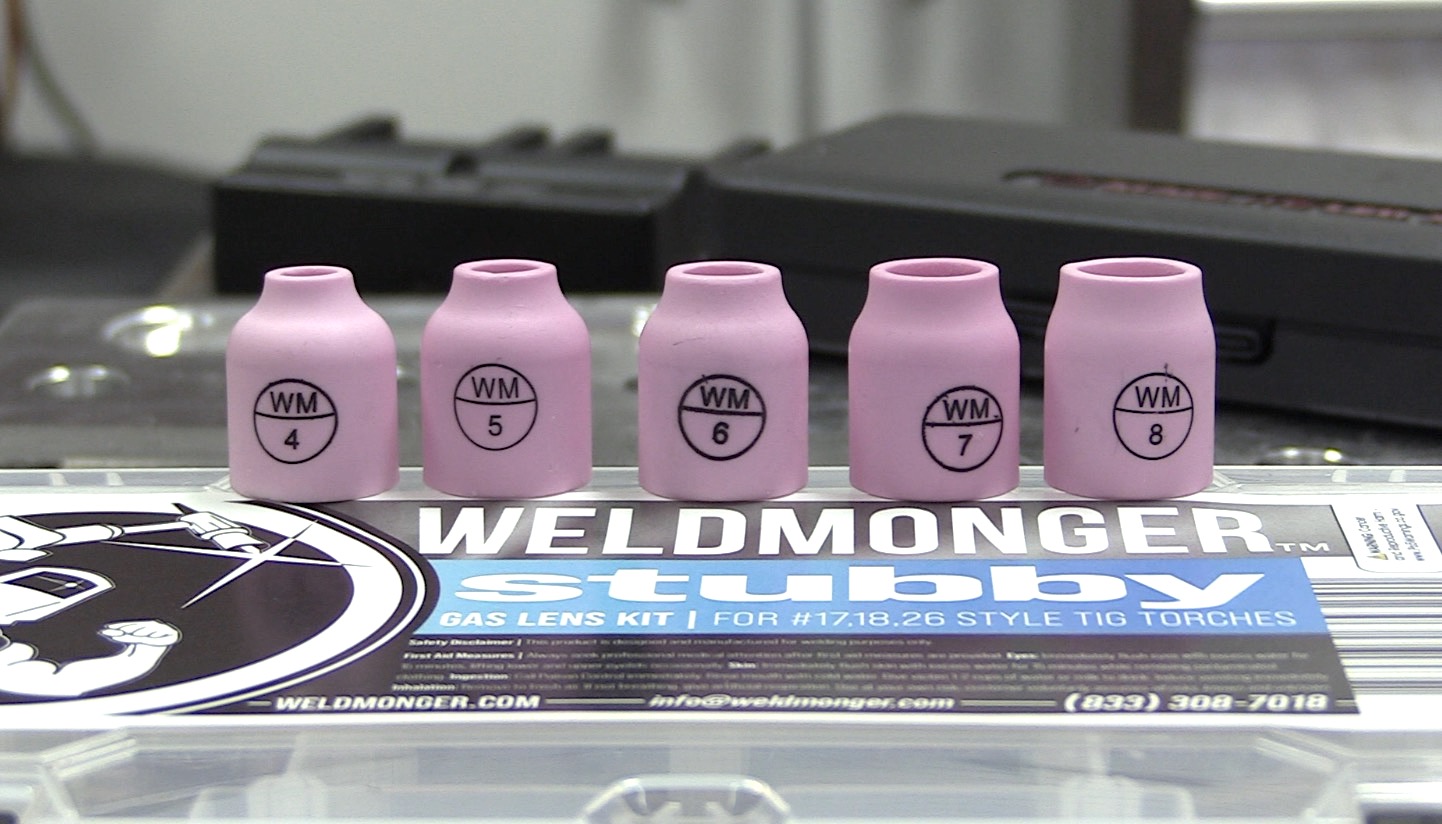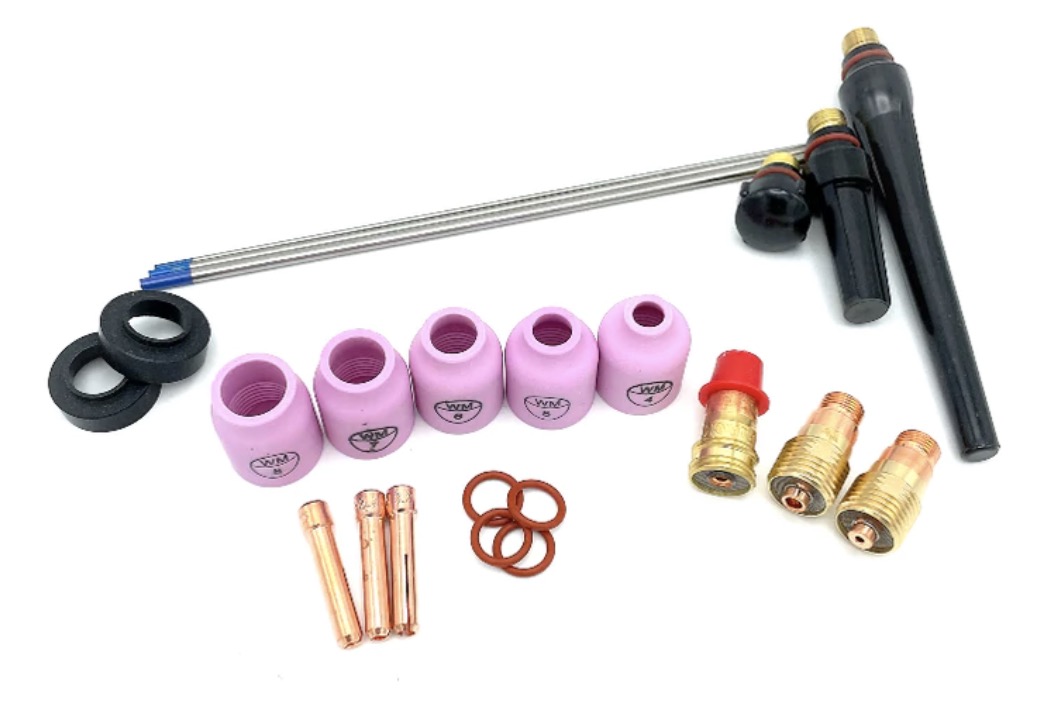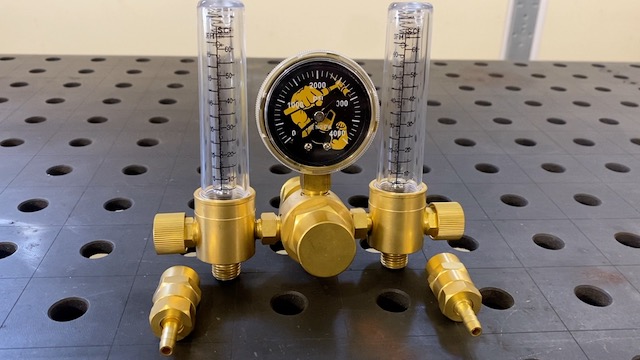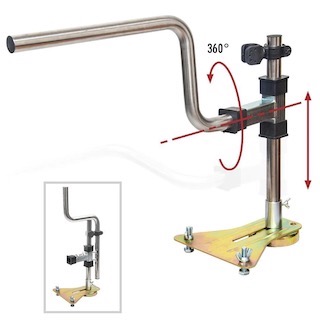Tips for TIG Welding Carbon Steel
Restart Techniques
- HOME
- TIG WELDING
- Tips for Tig Welding Carbon Steel
Corner, Lap, and Tee Joint TIG welding Techniques
- HOME
- TIG WELDING
- Tips for Tig Welding Carbon Steel
One of the fundamental skills every welder needs to have is to be able to stop and start without it being an obvious restart.
Of course we don't want to create any defects on any restart...that goes without saying.
But to take it a step further, being able to make a restart blend in where it is not really distinguishable, is a great skill to have.
A gas lens along with appropriate post flow gas can help with Restarts
When you need to stop and start a weld on carbon or stainless steel, keeping the torch still for several seconds helps to prevent oxidation.
Restarts on both carbon and stainless steels tend to go smoother when there is little or no oxidation in the stop and restart area.
A pre flow setting of around .5 seconds can also help restarts by allowing the arc start to be completely shielded upon ignition.
Most older TIG welding machines did not have a preflow setting but seasoned TIG welders simply learned to tap the foot pedal to initiate argon flow before starting a bead....Not always necessary, but it is a good practice.
What is the big deal about restarts anyway?
The main objective with any restart is to avoid defects.
After that, the goal is to make restarts as undetectable as possible.
Think about Tig welding a water or fuel tank. A poor restart can easily be a leak.
The techniques shown in the videos above are sound techniques that will not only prevent defects like leaks, but will also make for a smooth restart that is not easily detectable.
You might think that paint will cover up any irregularities, but paint can actually make poor restarts look worse.
Summary of best practices for TIG welding Carbon Steel
- Clean the metal ... especially hot rolled steel
- Use a sharp tungsten with a 30-40 degree taper
- A gas lens helps with gas shielding
- Aim for an arc length that is equal to electrode diameter
- limit torch angle but torch angle is more forgiving with a tight arc
- keep the hot tip of the filler rod shielded wth argon


